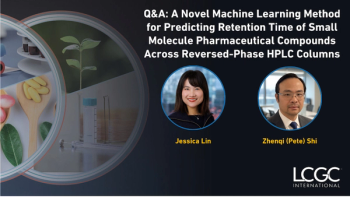
LC–MS/MS Unravels the Effects of Cooking on Piquillo Pepper (Poly)phenolic Compounds
A recent study was conducted using liquid chromatography–tandem mass spectrometry (LC–MS/MS) to identify the effect of cooking and storage on poly)phenolic compounds in piquillo peppers.
The piquillo pepper is one of the most commercially consumed vegetables on the market, yet there are few studies on the (poly)phenolic compounds within this type of pepper. Though the effect of culinary processing has been studied for other types of peppers using liquid chromatography–tandem mass spectrometry (LC–MS/MS) or Folin–Ciocalteu assays, only three studies have specifically studied Capsicum annuum peppers such as red and Italian green peppers. For Cristina Del Burgo-Gutiérrez, Concepción Cid, Iziar A. Ludwig, and María-Paz De Peña of the University of Navarra in Spain the aim of their research was to understand how cooking and canning affect the total and individual (poly)phenolic contents of a piquillo pepper.
The study involved two types of piquillo peppers, grilled and canned. The grilled peppers were put through a grilling and canning process, while the canned peppers were microwaved and fried with olive oil. Afterwards, all samples were immediately cooled and lyophilized in a freeze dryer. Finally, each sample was ground into powder using a blender and stored at -18°C until further analysis.
Using 0.5 mL of methanol-acidified water, 25 mg of each sample were extracted before being sonicated for 90 min and centrifuged for 10 min at 14,000 rpm. After collecting the supernatant, the residue was re-extracted, sonicated and centrifuged once again. The second supernatant was collected, and both supernatants were blended together, filtered and stored until LC–MS/MS analysis.
The (poly)phenolic compounds in the pepper samples were analyzed using high performance liquid chromatography (HPLC) with triple quadrupole linear ion trap mass spectrometer. Pure (poly)phenolic standards and (poly)phenolic compounds were used to identify (poly)phenolic compounds within the mixture.
The team identified 40 (poly)phenolic compounds in the raw piquillo pepper (most of which were flavonoids such as querecetin derivatives and luteolin derivatives). Flavonoids accounted for 62.6% of the total (poly)phenolic content, while nonflavonoids made up 37.4%. Of the 13 phenolic acids identified, cinnamic acids were the most common. Additionally, while previous studies identified quercetitin-3-O-rhamnsoide as the predominant (poly)phenolic compound in raw pepper, this study found the most abundant compounds to be luteolin-7-O-(2-O-apiosyl-6-O-malonyl)glucoside and cinnamic-4′-O-glucosidem, comprising 25.6% and 16.4% of the total content, respectively.
The industrial processes affected the peppers quite significantly. Because of the extremely high temperatures involved in grilling, the total content and the individual (poly)phenolic compounds of piquillo pepper decreased significantly, with canning processes having the same results. As for the cooking processes, microwaving and frying the peppers had no significant effect compared to canned pepper, but frying the culinary processed peppers resulted in a 10.6% increase in total (poly)phenolic compounds.According to the team behind the experiment, several factors could have affected the results, including the specific type of pepper and whether it was whole or peeled.
In conclusion, this experiment suggested that grilling peppers at high temperatures strongly degrades (poly)phenolic compounds while subsequent treatments at moderately high temperatures favors the release of (poly)phenolic compounds. Although there is still more research to be completed on piquillo peppers, the researchers believe that future research is of great interest to clarify the potential health implications (1).
Reference
(1) Del Burgo-Gutiérrez, Cristina; Cid, C.; Ludwig, I. A.; De Peña, M.P. LC–MS/MS Analysis Elucidates the Different Effects of Industrial and Culinary Processing on Total and Individual (Poly)phenolic Compounds of Piquillo Pepper (Capsicum annuum cv. Piquillo). J. Agric. Food Chem. 2023. Article ASAP. DOI:
Newsletter
Join the global community of analytical scientists who trust LCGC for insights on the latest techniques, trends, and expert solutions in chromatography.




